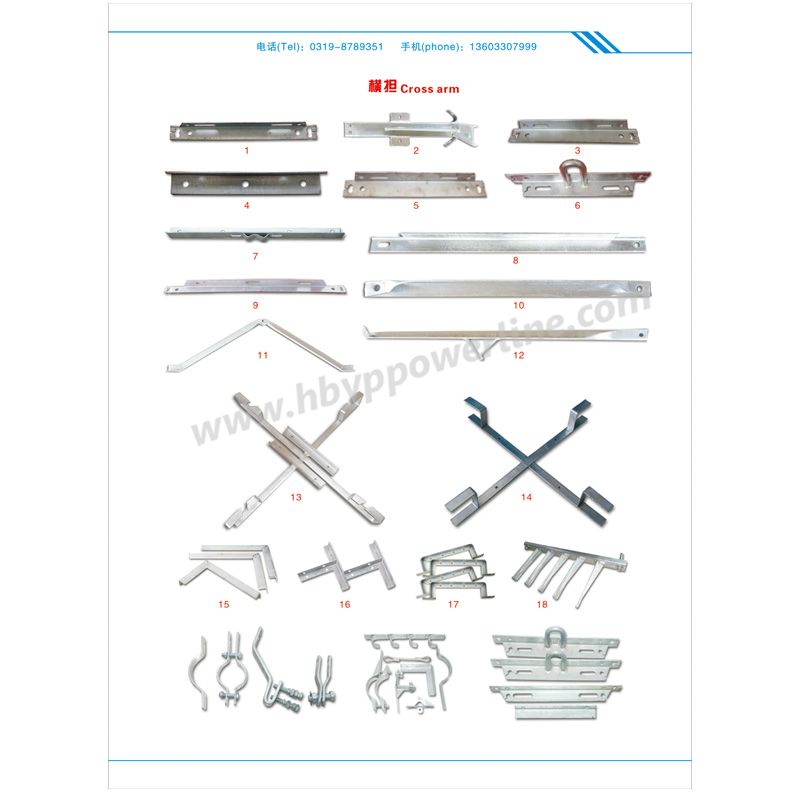What is the cross arm?
A cross arm, also known as a crossarm or cross brace, is a horizontal structural component used in utility pole construction and various applications related to electrical distribution, telecommunications, and related industries. It plays a critical role in providing support, stability, and attachment points for equipment and cables on utility poles. Here are the key characteristics and functions of a cross arm:
Horizontal Support: A cross arm is typically a wooden or metal beam that extends horizontally from a utility pole, perpendicular to the pole's vertical axis. Its length can vary based on the specific utility pole design and requirements.
Mounting Hardware: Cross arms often feature attachment points, brackets, or notches designed to secure various utility-related components. These can include electrical insulators, transformers, conductors, communication equipment, and other hardware.
Load Distribution: One of the primary functions of a cross arm is to distribute the weight and loads of equipment and cables evenly along the length of the utility pole. This helps prevent stress concentrations that could lead to pole failure.
Cable Separation: In electrical distribution systems, cross arms are used to maintain the separation between electrical conductors (wires or cables). This separation is essential to prevent electrical arcing or interference between conductors, enhancing safety and reducing the risk of power outages.

Stability: Cross arms provide lateral stability to utility poles, helping them withstand external forces such as wind, ice, and weather conditions. They help keep the pole upright and maintain the vertical alignment of utility lines.
Accessibility: Cross arms are designed to facilitate access for maintenance and repair activities. Technicians can safely climb the pole and work on equipment attached to the cross arm, ensuring the continued operation of utility services.
Versatility: electrical Cross arms come in various materials (wood, steel, fiberglass) and configurations to accommodate different utility pole designs and applications. They can be customized to meet the specific needs of electrical or telecommunications networks.
Aesthetics: In urban and residential areas, cross arms are often designed to blend in with the surrounding environment and minimize the visual impact of utility infrastructure. Aesthetics are considered to maintain the appearance of the pole and the overall area.
Safety: Properly installed and maintained cross arms enhance safety by preventing equipment and cables from coming into contact with the ground or other objects. This reduces the risk of electrical hazards, cable damage, and service interruptions.
In summary, a Yipeng cross arm is a horizontal structural component attached to utility poles, serving as a critical support and attachment point for various utility-related equipment and cables. It plays a pivotal role in ensuring the stability, load distribution, and safety of electrical distribution and telecommunications systems. Cross arms are essential components of utility infrastructure, contributing to the reliable and efficient delivery of essential services.

Comments
0